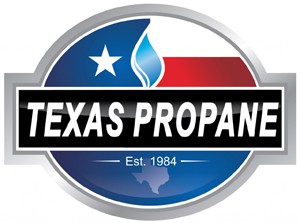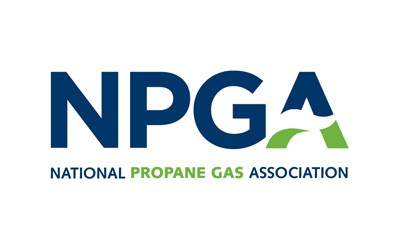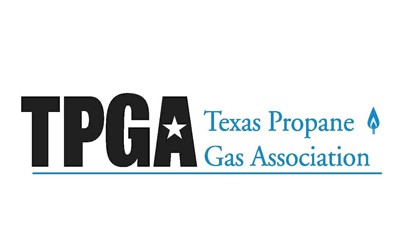Heating Your Home in Cold Weather
If you heat your home using propane and it’s cold outside, you are going to use more propane. This also goes for heating with natural gas and electricity. The United States encompasses such a huge geographic area that the climate regions of the country range from frigid to tropical. These contrasting environments signify a huge difference in heating seasons as well as varying lengths of heating seasons. Some areas in the southern U.S. have almost no heating season at all while other areas in the northern U.S. seem to have a heating season for most of the year.
Consumers in the warmer regions of the U.S. may believe they have a leak after an unseasonable winter or extended period of cold weather more often than propane consumers in cold climates. This is because people in these warmer climates are not used to cold winters and they can’t see how they could have used so much gas. This actually occurred in San Antonio, Texas after an extended period of cold temperatures in January of 2007.
San Antonio is known for hot summers and mild winters and the propane customer was unable to believe that he had gone through so much gas in just a few weeks. The customer has a 1,000 gallon propane tank that supplies the following LP Gas appliances (with appliance BTU ratings):
- 3 Water Heaters – 40,000 BTU/hr each
- 2 Central Furnaces – 200,000 BTU/hr each
- 1 Clothes Dryer – 35,000 BTU/hr
- 1 Gas Range – 65,000 BTU/hr
- 2 Fireplaces (with ceramic logs) – 26,000 BTU/hr each
- 1 Pool Heater – 425,000 BTU/hr
One gallon of propane contains 91,547 BTU’s. The appliance usage at 100% capacity is indicated by appliance BTU ratings. In other words, a furnace with a 200,000 BTU/hr rating means the furnace will use 200,000 BTU’s per hour when it is running at “full blast”. The furnace will utilize about 2.2 gallons of propane in one hour’s time (200,000 / 91,547 = 2.18). The total load on this house is 1,097,000 BTU/hr meaning that if all appliances are running at 100%, the total use will be about 12 gallons of propane per hour (1,097,000 / 91,547 = 11.98). At this propane usage rate, a total of 288 gallons are being used each day.
Realistic Propane Usage
We know nobody will run all of their appliances at 100% all day long, so let’s take a reasonable approach to higher than average gas usage using the example above during off peak usage (Summer months) versus peak usage (Winter months).
Summer Propane Usage
During off peak months, propane will be utilized by cooking appliances, water heaters, clothes dryers and maybe pool heaters. If the gas range, dryer and water heaters are used at a rate of 25% capacity 2 hours per day, the gas usage will be about 1.2 gallons per day.
222,000 BTU/hr / 91,547 = 2.4 gal/hr · 2.4 gal/hr x .25 = .6 gallons · .6 gallons x 2 hours = 1.2 gallons of propane
Using the same calculation above, the usage rates will differ as capacity and length of use change.
- 25% capacity for 2 hours – 1.2 gallons per day
- 25% capacity for 6 hours – 3.6 gallons per day
- 50% capacity for 2 hours – 2.4 gallons per day
- 50% capacity for 6 hours – 7.2 gallons per day
If the pool heater (425,000BTU/hr) is used for one hour per day at 75% capacity, add 3.5 gallons per day to the numbers above (425,000BTU/hr / 91,547 = 4.64 gal/hr · 4.64 x .75 = 3.48 gallons). As you can see, pool heaters use a lot of gas and playing with these numbers, you can get an idea of normal off peak propane usage rates.
Winter Propane Usage
The winter months bring more usage of all energy sources for heating so the usage numbers above will drastically change as heating requirements increase. For example, let’s take an unseasonably cold week with the same appliances above and compute the propane gas usage with the same hours of use adding the use of the furnaces for heating. If the furnaces are used at 50% capacity for 12 hours, the daily usage will increase by about 26 gallons. Note that does not include the two fire places.
400,000 BTU/hr / 91,547 = 4.4 gal/hr · 4.4 gallons x .5 = 2.2 gallons · 2.2 gallons x 12 hours = 26.4 gallons
Using the same calculation above, the usage rates (during heating) will differ as capacity and length of use change.
- 50% capacity for 18 hours – 39.6 gallons/day or 277.2 gallons/week
- 75% capacity for 06 hours – 19.8 gallons/day or 138.6 gallons/week
- 75% capacity for 12 hours – 39.6 gallons/day or 277.2 gallons/week
- 25% capacity for 12 hours – 13.2 gallons/day or 92.4 gallons/week
- 25% capacity for 18 hours – 19.8 gallons/day or 138.6 gallons/week
- 25% capacity for 24 hours – 26.4 gallons/day or 184.8 gallons/week
Pool Heater Gas Usage
If you add the propane consumption of the pool heater, the numbers will really start to increase. Pool heaters are high capacity that can consume more than 4.5 gallons of propane per hour (425,000 BTU/hr / 91,547 = 4.64 gal/hr). If it takes 4 hours to heat the pool on a cool day, the pool heater may use 18.5 gallons. We bring pool heaters up because they are such high demand appliances that can really cause consumers to think they have a gas leak — when in reality, they just need to be mindful of not leaving the pool heater on for an extended period of time. The pool heater in the above example will consume 100 gallons of propane in less than a day if left running at capacity. If you’re heating your pool, keep an eye on the gas gauge.
Propane Usage Comparison
As described and explained in this article, the propane usage rates during peak and off-peak seasons contrast significantly and can leave some people guessing where all their gas went after a cold weather period. Many people may believe they must have a leak, but their system is actually leak-free and they just used the gas. This is especially true in warm climate regions where an extended period of cold weather prompts a sharp increase in propane usage through home heating. Propane users get used to the gas bill being the same month after month and then when an uncommonly cold norther sets in, they use more propane than they though they ever would. The fact is they just aren’t used to it and it doesn’t necessarily mean there’s a leak within the system.
Source:









2 Responses to Above Average Propane Usage is Not Necessarily a Leak